One way to make sure you’re eating healthy is to include a variety of different-colored fruits and vegetables in your menu. That’s because the natural chemical compounds which give vegetables their different hues also imbue these veggies with particular nutrients. Orange-pigmented vegetables tend to be high in beta-carotene, a chemical that your body converts to vitamin A. They’re also great sources of vitamin C, various B vitamins, calcium, iron, and potassium. And when it comes to orange options, you have plenty to choose from! Let’s take a closer look at some of the most delicious possibilities.
1. Sweet Potatoes

A root to root for: sweet potatoes are as tasty as they are nutritious.
©Angelika Heine/Shutterstock.com
This popular vegetable lives up to both parts of its name. Sweet potatoes grow underground like potatoes (though they’re not close relatives), and when cooked develop a deliciously sweet taste. A true superfood, sweet potatoes are rich in beta-carotene, and also bring vitamin C, potassium, manganese, and other vitamins and minerals to the table.
2. Winter Squash

Orange you glad you brought home some squash for dinner?
©iStock.com/bergamont
These vegetables are in the Cucurbitacae family, which also includes cucumbers and watermelon. Winter squash are also known as gourds, and tend to have ribbed or bump skin, a variety of shapes, and vibrant colors with lots of yellows, oranges, and greens. Sometimes used as seasonal decorations, winter squash are packed with beta carotene and other nutrients. They really deserve to be the centerpiece of your recipes, not just of your dining room table. They’re dense, filling foods and relatively low in calories, which helps keep blood sugar levels steady. We’ll talk a closer look at some standout winter squash, but you should grab whatever varieties are available at your market! Enjoy winter squash in soups, stews, and casseroles, or just roast them and scoop out the flesh.
3. Pumpkins
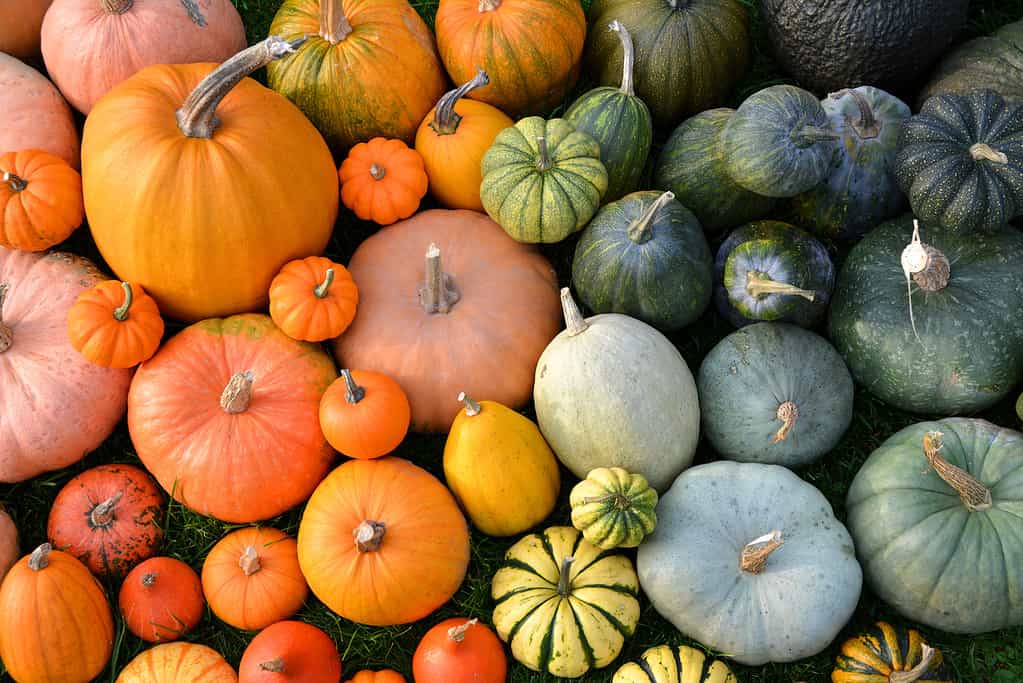
Not all pumpkins are orange on the outside, but they’re all packed with nutrients inside.
©Studio Barcelona/Shutterstock.com
The many varieties of pumpkins are all types of winter squash. You may think of pumpkins as source material for jack-o-lanterns and pies, but this vegetable has so much more to offer! Like other squash, pumpkins are full of fiber, and offer lots of nutrients, including beta-carotene and vitamin K, with relatively few calories. When choosing pumpkins for your recipes, avoid the jack-o-lantern varieties, which aren’t bred for flavor. Smaller-sized pie pumpkins are a better bet, or buy canned pumpkin pulp. Treat pumpkin as a vegetable, not a dessert ingredient, so its nutritional value doesn’t get counteracted by lots of fat and sugar. And don’t forget to roast the seeds!
4. Acorn Squash

Acorn squash is great in soups and stews, or just roast it on its own and enjoy.
©iStock.com/MSPhotographic
A versatile and widely available winter squash, acorn squash has a pleasing, mild flavor that makes it a recipe champ. The simplest preparation method is to halve the squash, scoop out the center seed and strings, and bake the halves cut-side-up until the flesh is tender. Season however you like; ginger and cinnamon are good choices.
5. Butternut squash
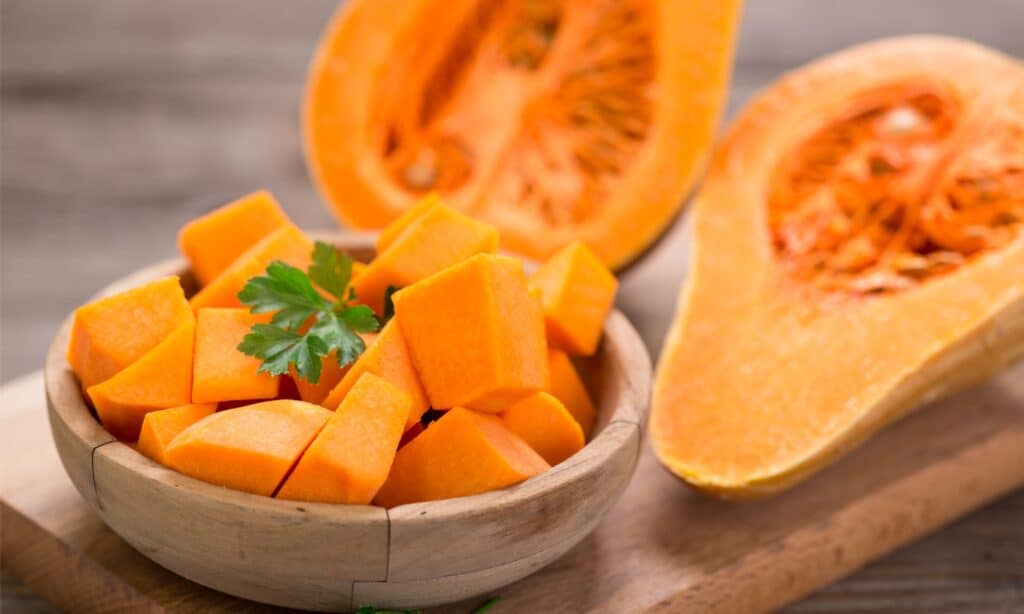
Butternut’s deep orange color points to its high beta-carotene content.
©iStock.com/pilipphoto
The mild, sweet, nutty flavor of this squash is accompanied by lots of vitamins A and C. Peeling a butternut squash before cooking can be difficult; you can opt to roast the squash first and peel it after it’s cooked. The vegetable can be roasted whole, or cut up into cubes. The cooked squash makes a great addition to soups and stews.
6. Kabocha Squash
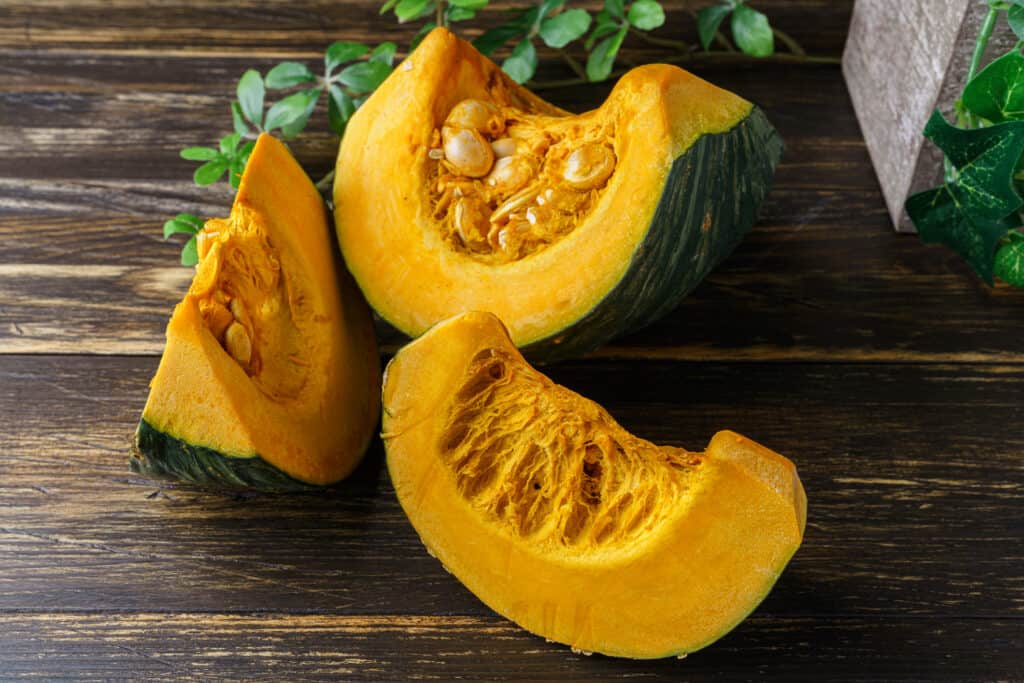
The so-called “Japanese pumpkin” may be your new favorite squash.
©iStock.com/Wako Megumi
Looking kind of like a small, green pumpkin, the inside of the kabocha squash has bright orange flesh that signals its rich beta-carotene content. This squash is popular in Japan; its name means “winter squash” in Japanese. Its flavor is similar to a sweet potato or pumpkin, with a bit of butternut-like nuttiness. Look for a hard skin when you buy one, which is an indicator of ripeness. Prepare the kabocha as you would any other winter squash; you can substitute it for acorns or butternuts in recipes.
7. Carrots
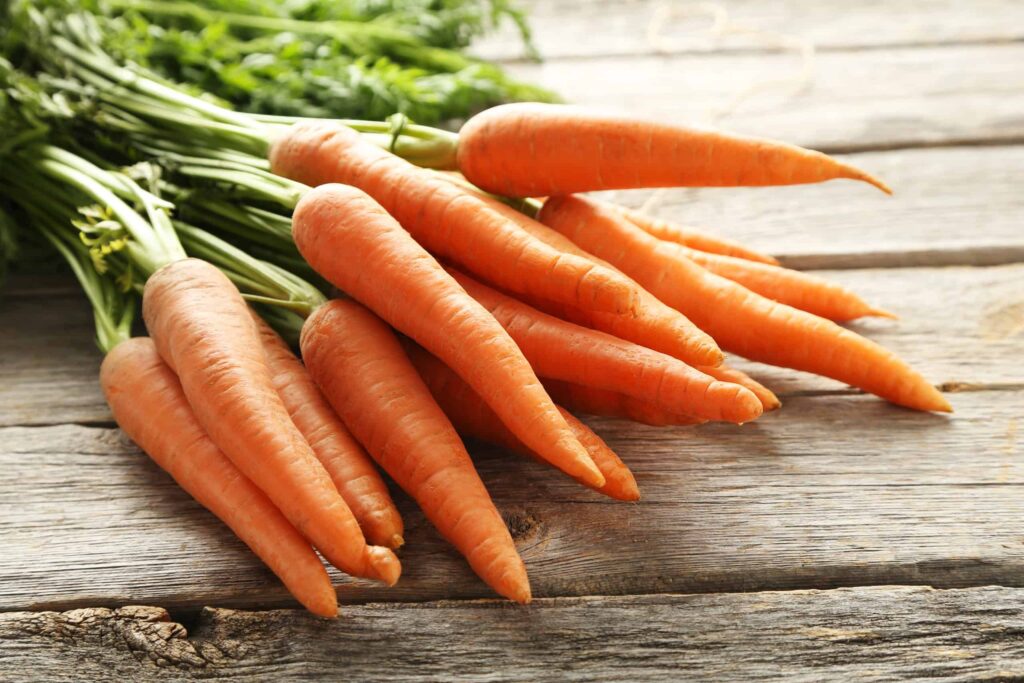
What’s up, Doc? Your health, if you include carrots in your meal plan.
©5 second Studio/Shutterstock.com
Probably the most famous of all orange vegetables, these root vegetables have been cultivated by humans since they were first grown in Afghanistan in 900 BC. Carrots actually started out as purple or yellow vegetables; the orange variety was developed in Europe in the 15th or 16th century. Thanks to their sugar content, carrots have a slightly sweet taste that makes them perfect for eating out of hand or using in recipes of all sorts. So they’re a great choice for adding more antioxidants, vitamins, and minerals to your diet
8. Orange Bell Peppers

Different-colored bell peppers bring different nutrient profiles to your plate.
©Alberto Masnovo/Shutterstock.com
Native to North and South America, bell peppers taste great raw or cooked. They’re generally high in vitamin C and antioxidants, and the orange and red varieties contain lots of beta-carotene. These peppers are also good sources of vitamin B6, folate, vitamin E, and fiber. You can also enjoy bell peppers in the form of paprika, which is a dried and powdered form of this vegetable!
9. Orange Sweet Peppers
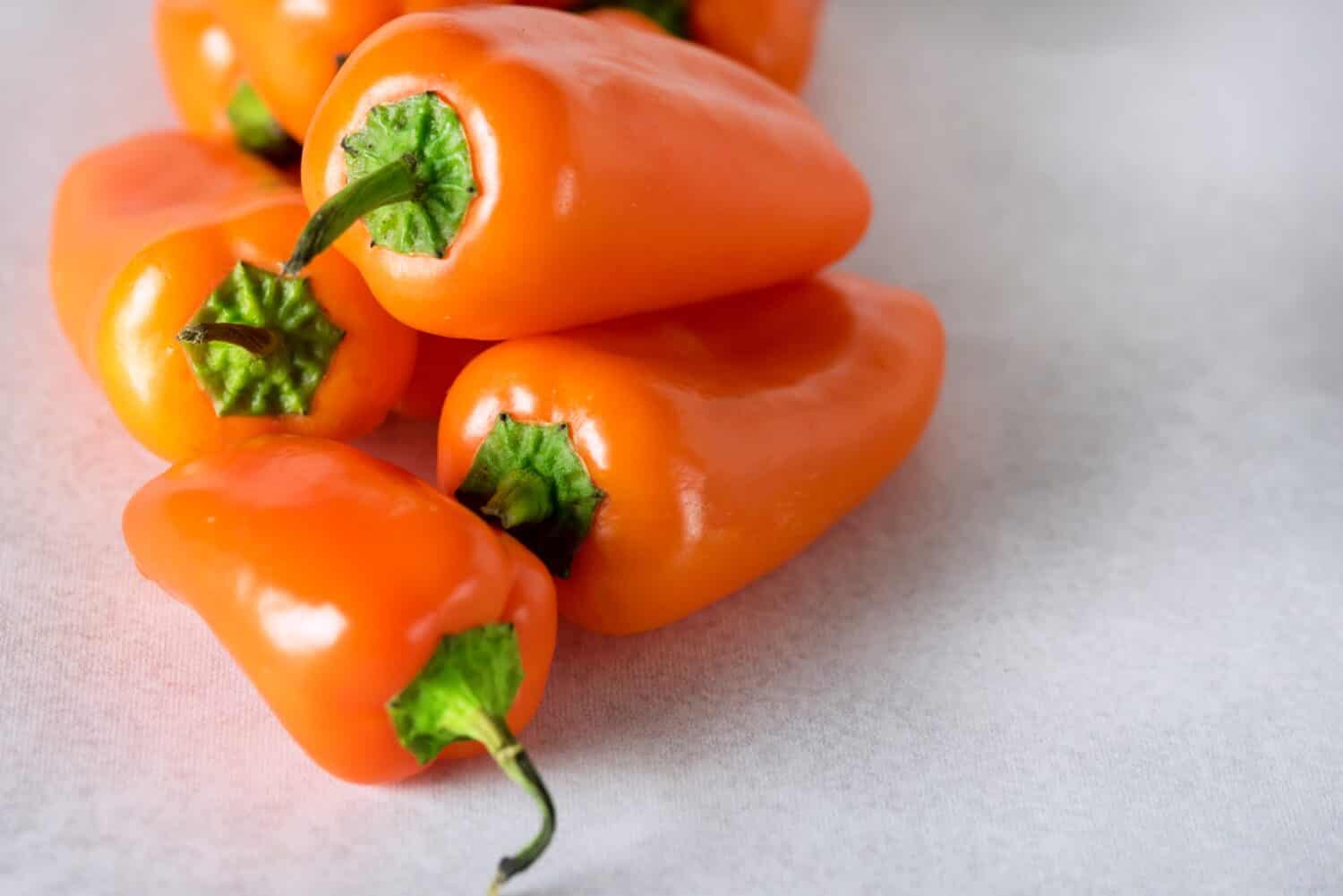
Small orange peppers are sweet to eat raw or cooked.
©KateYudina/Shutterstock.com
Sometimes called “Italian peppers,” “Italian sweet pepper,” or “Italian frying peppers,” these are pepper varieties of the same species as the bell pepper, but with a smaller, tapered shape. They have a sweet flavor whether raw or cooked, and add spice and zest to recipes without bringing the heat of chili peppers (see below). Many varieties pass through yellow, orange, and red stages as they ripen.
10. Orange Chili Peppers

Hot stuff: red or orange, the habanero isn’t for the faint of tongue.
©iStock.com/Kateryna Bibro
If you like heat with your eats, the orange or red habanero pepper will deliver, and then some. But approach with caution! It’s the hottest chile pepper available at most nonspecialty grocery stores, and was once the hottest pepper in the world. New varieties have since surpassed the habanero’s heat, but many consider the habanero superior because of its flavor. Hot peppers contain capsaicin, a chemical compound shown to reduce cholesterol levels, lower blood pressure, and counteract depression.
11. Orange Tomatoes
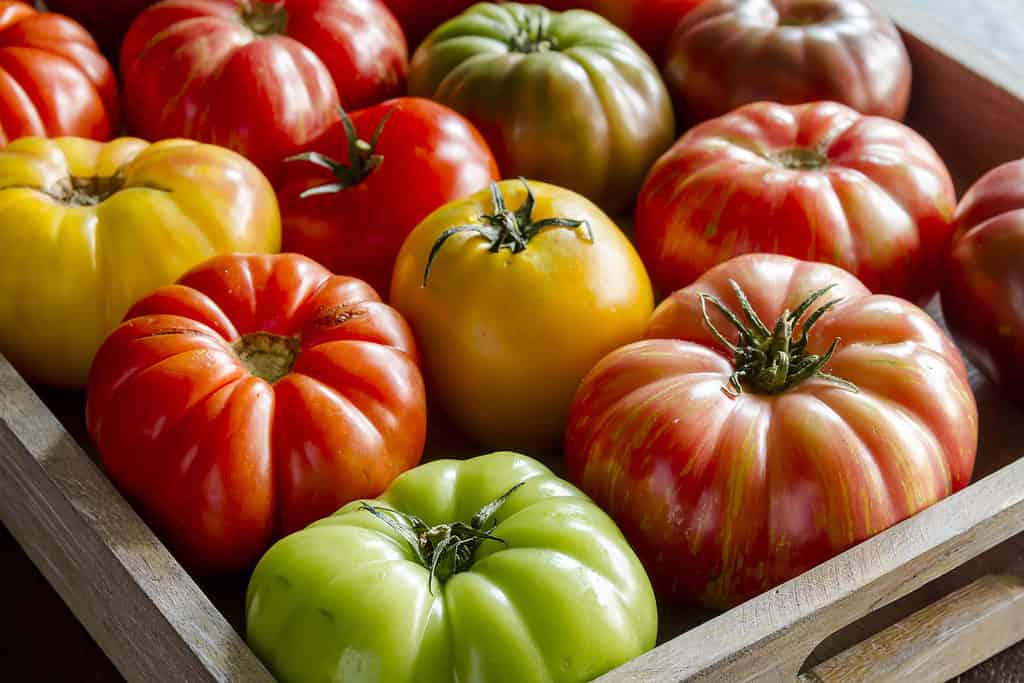
Heirloom tomato varieties come in a range of colors.
©Teri Virbickis/Shutterstock.com
The famously red tomato is also available in other hues, including yellow and orange. Often these are heirloom varieties, first developed decades ago, or even dating back a century or more. Tomatoes are a great source of vitamin C, antioxidants, beta-carotene, and vitamins Ba bd E. While red tomatoes are high in lycopene, which benefits skin health, orange tomatoes offer more beta-carotene. Orange and yellow tomatoes are less acidic than the red varieties, which might make them easier to eat for some people.
12. Turmeric Root
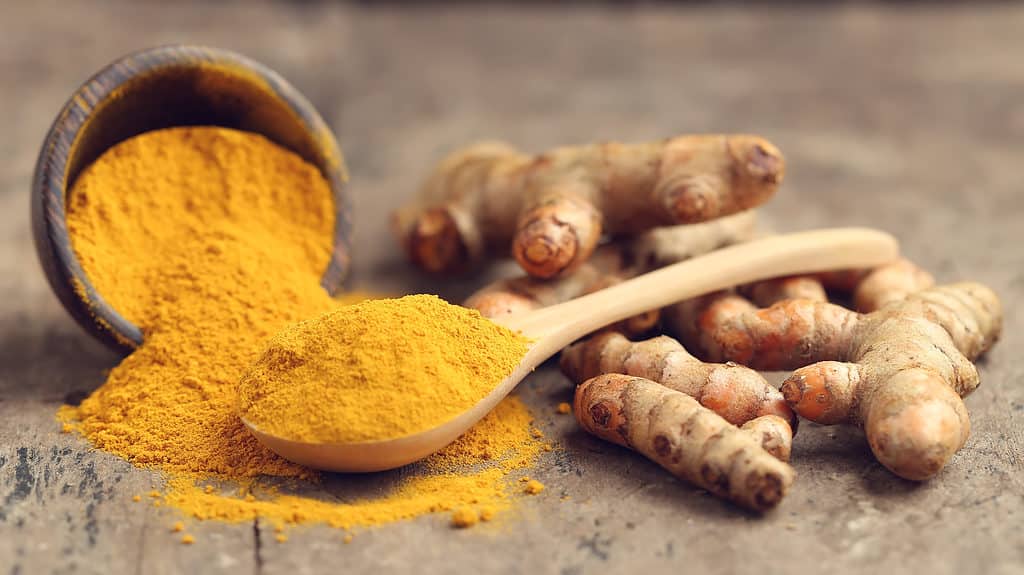
Flavorful tumeric is a zesty kitchen spice and a traditional medicine.
©tarapong srichaiyos/Shutterstock.com
This golden-orange spice comes from the root of a native Asian plant, and has been used traditionally not only for its culinary properties, but for medicinal purposes. Its active ingredient is a compound called curcumin, which has protective antioxidant properties and also reduces inflammation. It may also improve arthritis symptoms and mood disorders. Turmeric is a common ingredient in Asian cuisine, and makes a tasty tea too. You can buy the spice, or get the whole root and chop or grate as needed.
13. Orange Swiss Chard
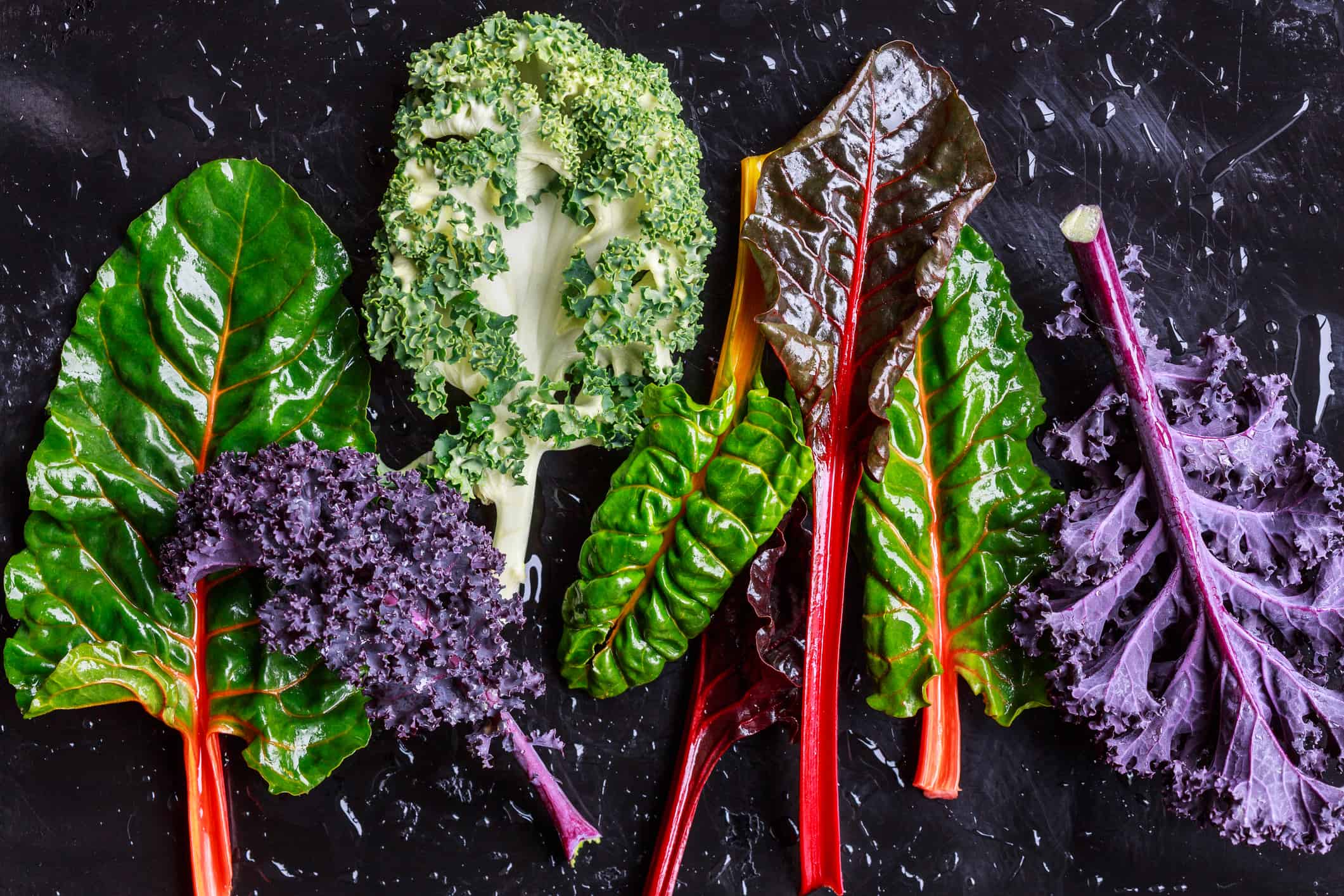
Rainbow chard gets its name from its white, red, yellow, and orange stems (shown here with purple kale).
©iStock.com/Quanthem
Most leafy greens are, well, green. But Swiss chard is famous for the bright colors of its stems, adding a spectrum of red, yellow, orange, and white shades to backyard gardens and market produce bins. In fact, batches of chard with different-hued stems are often sold together as “rainbow chard.” The oriole variety produces bright orange stems specifically. Chard is rich in vitamin K, antioxidants, and other nutrients. Chopped chard (leaves and stems) is great for tossing into scrambled eggs or salads. You can sauté it to use as a side dish or to top baked potatoes. Just don’t add salt, as chard already contains a healthy dose of sodium.
14. Orange Cauliflower

It tastes the same as the regular variety, but “cheddar” cauliflower contains more beta-carotene.
©Brent Hofacker/Shutterstock.com
Sometimes called “cheddar cauliflower,” this vegetable doesn’t chase like cheese, though it looks like it might. The orange cauliflower has its origins in 1970s Canada, where a mutant cauliflower with an orange hue was discovered. Cross-breeding with standard cauliflower varieties eventually let to a marketable version. The orange color of this veggie is due to a mutation that allows it to hold more beta-carotene. Which, as you know by now, is a definite plus for your health. Cauliflower is also high in vitamins C and K
15. Orange Beets
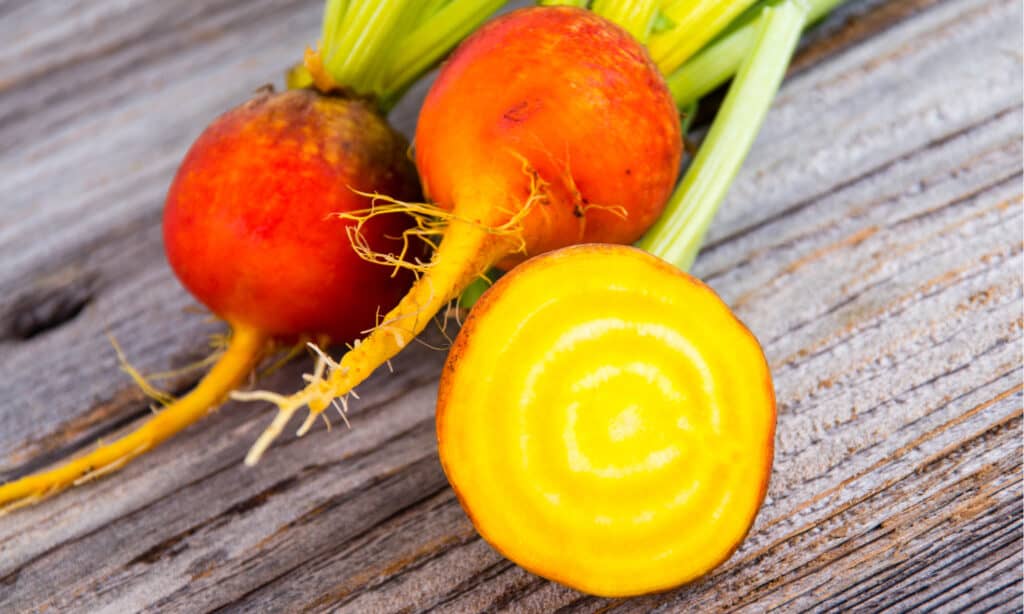
Can’t be beat? Un-beetable? You figure out the caption, just be sure to add orange-hued golden beets to your shopping list.
©julie deshaies/Shutterstock.com
Also called golden or yellow beets, this variety of the typically red or purple root veggie is higher in a type of antioxidant compound called betaxanthin. (Different colored beets contained different antioxidant groups, so it’s good to mix them up.) Beets are high in fiber, high in nitrates (good for improving blood pressure), and a good source of potassium (another blood pressure benefit). Be sure to eat the greens, too. Beet leaves are full of beta-carotene, as well as compounds that are good for eye and vision health.
16. Orange Lentils
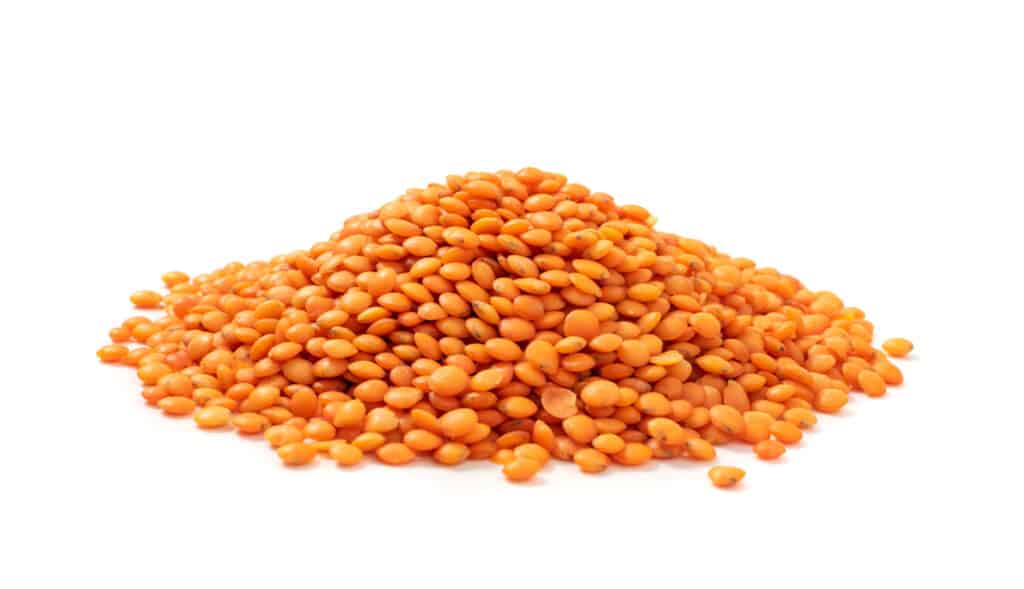
A variety of red lentils, orange lentils cook quickly and add protein and fiber to any recipe.
©Ermak Oksana/Shutterstock.com
Small as far as legumes go, lentils are packed with plenty of nutrition. They contain plant-based compounds called polyphenols, which seem to have antioxidant and anti-inflammatory effects, and promote brain health. They’re high in protein and fiber and contain a healthy dose of iron. Orange lentils are a variety of red lentils, which means they cook quickly and have a mild, sweet flavor. Just rinse, cover in water, bring to a boil, and simmer for five minutes or so. Then you can add them to salads, soups, or other recipes.
The photo featured at the top of this post is © LifetimeStock/Shutterstock.com
Thank you for reading! Have some feedback for us? Contact the AZ Animals editorial team.







